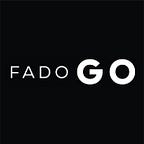In today’s business environment, there are many diverse choices for customers, making it easy for them to switch to other brands. Therefore, long-term customer retention is essential. As a result, many businesses are focusing on enhancing lifecycle marketing through loyalty programs.
What is Lifecycle Marketing?
Lifecycle marketing is the process of understanding, attracting, interacting, and surprising customers. Providing everything they want and need to convert them from potential customers to loyal customers who will bring in revenue, good reviews and marketing for the business.
There are 4 types of customers brands need to classify in their marketing strategies:
- Prospects: These are potential customers who have expressed an interest in the brand. They could be unidentified website visitors, window shoppers, or registered users.
- Active customers: These are customers who buy products or services. They can be first-time buyers, returning customers, or frequent buyers.
- Inactive customers: These are customers who used to buy but stopped for whatever reason. They are at risk of leaving the brand if they are not properly motivated.
- Engaged customers: These are customers who have been reactivated successfully. They have a high lifetime value and are unlikely to leave.
The Importance of Lifecycle Marketing
Acquiring new customers but not putting efforts to retain them is a waste of time. Unfortunately, most brands often end up doing this. Realizing the importance of lifecycle marketing can help brands avoid this mistake. Focusing on building relationships with customers or being close to them during their buying journey can help brands keep customers instead of spending money to attract new customers. Besides that, lifecycle- based segmentation will provide brands deeper insights to develop customers interacting activities, allowing brands to have a better understanding about their customers. Moreover, with good knowledge about customers, brands can make their marketing campaigns more relevant and specific.
Stages of Lifecycle Marketing
Lifecycle Marketing
Stage 1: Reach & Obtain
Customers know little to nothing about the brand at this point, so it is important to catch their attention. This is where the lifecycle marketing comes into play, as it can raise customer awareness through a variety of advertising campaigns. However, do not forget the importance of word- of- mouth.
Stage 2: Act & Persuade
Customers are now aware of the brand and are considering making a purchase. They usually require a gentle push. Reviews and recommendations from their peers, blogs, or even a first-purchase incentive from a loyalty program can persuade these customers to choose the brand over the other competitors.
Stage 3: Convert & Motivate
After closing the first deal, the brand must think of ways to retain customers and lure them into making the next purchases. Personalized newsletters, a free shipping policy and a tiered loyalty program structure can all be used to sustain interest over time.
Stage 4: Engage & Recognize
Modern customers tend to lose interest if a company is only interested in promoting the next purchase. Non-transactional engagement is essential for encouraging true loyalty or even converting customers into brand advocates.
How Loyalty Programs can help?
Stage 1: Reach & Obtain
Similar to traditional lifecycle marketing, the first step of the process is to generate people’s awareness about the brand. With loyalty programs, brands can allow customers to acquire points or tokens by referring their friends or family and reviewing products, these points/ tokens can be later redeemed for discounts, special offers, gifts, etc.
Stage 2: Act & Persuade
In this phase, future customers are just browsing but not a member yet. Brands can easily convince them to join in loyalty programs by putting gamification in surveys, the data can be then used for personalization. In addition, allowing customers to have a trial or discount in their first purchase is also necessary.
Stage 3: Convert & Motivate
This is the most straightforward stage as most loyalty-related features, such as tiers or VIP clubs shines brightest. Apart from discounts and gift cards, brands should focus on something more meaningful such as a free shipping policy, unique gifts, invitations to community occasions, or early access to developing products. This will make customers feel valued and motivate them to stay loyal.
Stage 4: Engage & Recognize
Brands should not only focus on promoting their products since it will make customers get bored. Instead, focusing on improving engagement will encourage true loyalty. Brands can allow premium customers to participate in secret events and access to staff activities to build an emotional connection. In addition, with loyalty programs, members can receive personalized birthday messages with bonus points. Recipients are influenced and are more likely to make unplanned purchases in order to redeem their gift.
Read: Gamification in Loyalty Programs
Lifecycle marketing can allow any business to define and build a customer journey to keep them satisfied. Satisfied, enjoyable customers are long-term customers, and that is great for business. Lifecycle marketing will always nurture customers, making them feel valued. With loyalty programs, lifecycle marketing can be enhanced more than ever.
📌 Our official channels:
🔹 Twitter 🔹 Telegram Channel 🔹Global Community Telegram 🔹Medium 🔹 Website 🔹 Facebook 🔹 LinkedIn 🔹 Instagram 🔹 TikTok
